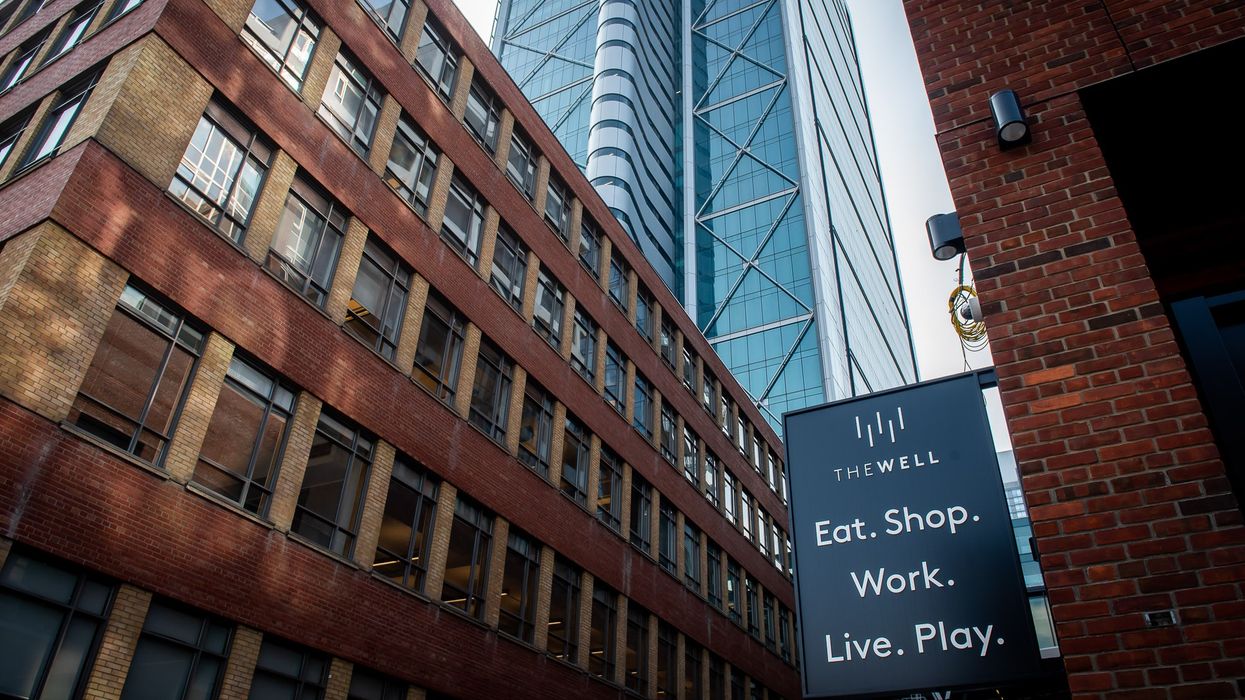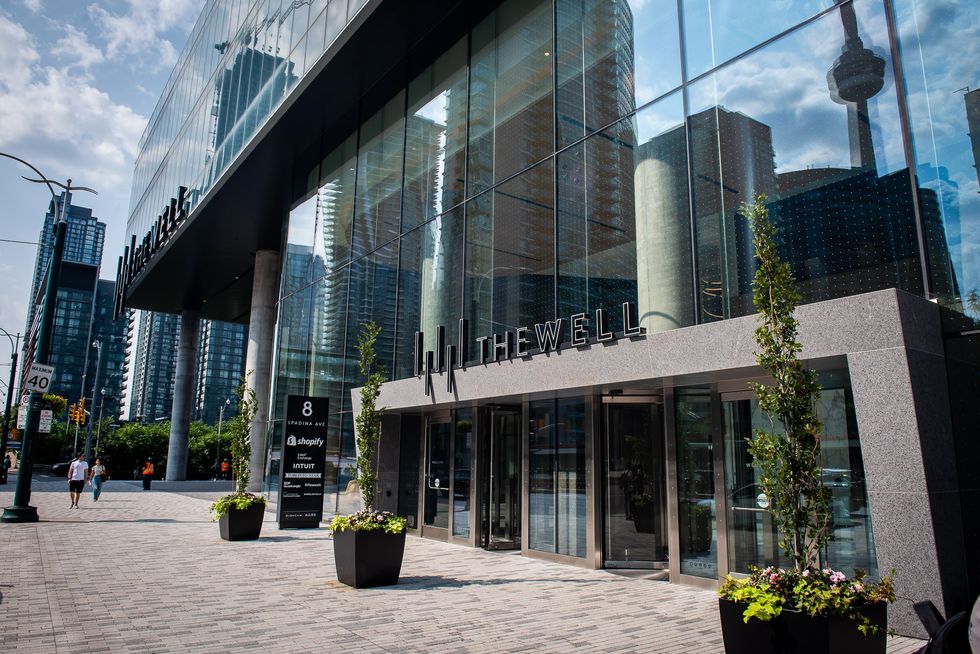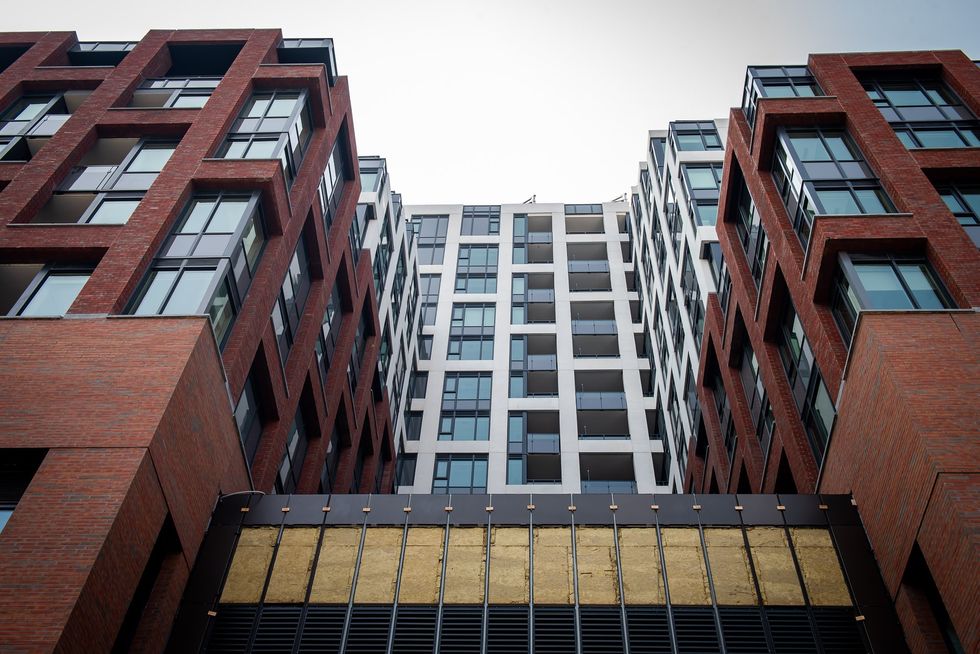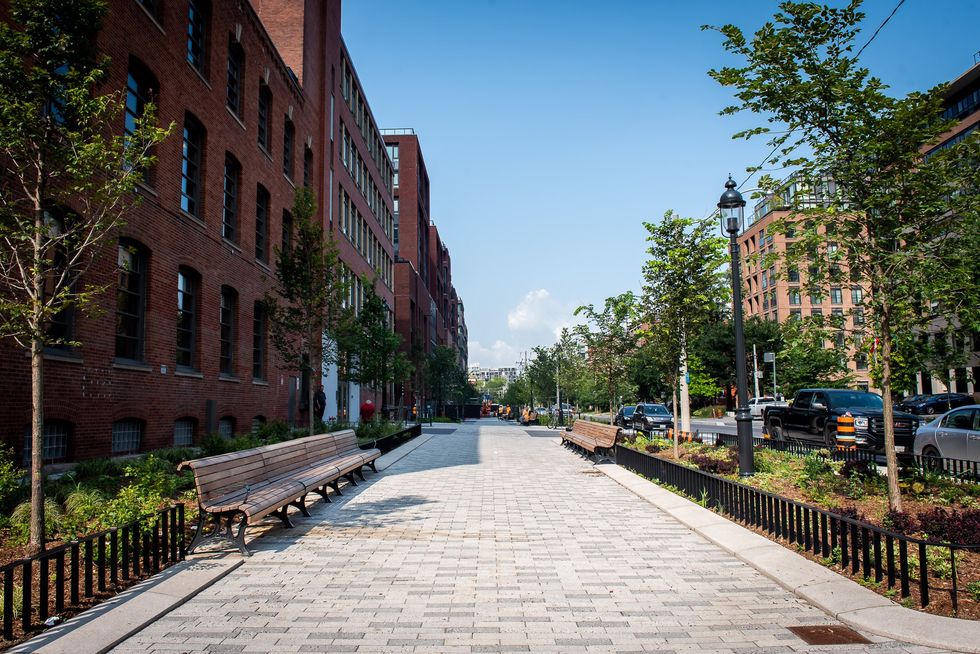Even before it’s finished, The Well is being hailed as the “mall of the future.” Whether or not that’s desirable at a time when malls everywhere are dying, it’s clear the multi-use complex aspires to much more than mere malldom – past, present, or future.
The sprawling new scheme, on an 11-acre site bounded by Spadina, Draper, Wellington, and Front, is designed to extend the hustle and bustle of the downtown core farther west. Sitting on land once partially occupied by the Globe and Mail, The Well seems certain to bring life to a district that has long felt strangely separated from the larger city. It also continues the contemporary understanding that mega-projects such as this must embrace a range of uses, everything from retail and residential to corporate, leisure, and institutional.
Of course, the usual shops can be found along three stacked walkways that run through the site from east to west. But that’s just the beginning, and in some ways, the least interesting part of The Well. More compelling is the bold mix of form and function, planning and architecture, public and private. Because serious efforts have been made to ensure the space is a continuation of the city, it feels less a place apart than one would expect. The complex is aggressively porous; the main entry escalator, for instance, on the northwest corner of Spadina and Front, reaches up directly from the sidewalk, obviously connected to the larger landscape. There is no separation between inside and out, if those are the right words.
By contrast, when the Eaton Centre opened in the late 1970s, it was deliberately sealed off from Yonge St except for one entrance at Shuter St as well as one at each end, Dundas and Queen, north and south. It sucked the life out of Toronto’s main street and finally, in the early 2000s, the east side of the mall was reconfigured to be more open to the city. Multiple entrances were added to increase the connection between the mall and the city beyond. The façade was also remade to resemble a traditional Toronto row of storefronts, the very thing the Eaton Centre had replaced decades earlier.
The Well has also avoided the monolithic look of projects designed by one architect, at least at its lower levels. A number of firms had a hand in designing the buildings, including architectsAlliance, Adamson Associates, Hariri Pontarini, and BDP. The results range from the see-through tower on the east as well as conventional residential high-rises to the west.
Compared to, say, the redevelopment of the old Honest Ed’s site at Bathurst and Bloor, a number of variations on a single architectural theme, The Well embraces contrast and contradiction. This is not to say the buildings are out of the ordinary; for the most part they are the kind of that can be seen across Toronto. There’s plenty of glass and steel here, especially in the anchor building at Spadina and Front. It comprises a vertical cascade of stacked boxes that sit atop a horizontal jumble of transparent structures that face east. Though a Tokyo-like stairwell – if that’s what it is – mars the minimalist elegance of the structure, it succeeds nicely at street level. That’s where it does its civic duty and connects effortlessly to the urban fabric.
Indeed, the most engaging part of The Well is what happens at lowest four to six storeys. The clear highlight here is the terracotta-clad tower that brings an unexpected classical sensibility to the ensemble. With its soft surfaces, curved corners, and double-height arches, it could have been lifted from a Giorgio de Chirico canvas, but without that unsettling sense of sunlit menace.
The nearby skating rink, though uncomfortably small, adds a domestic touch to the complex. Even better, a glass-and-steel canopy above blurs the distinction between inside and out, providing protection from the elements with cutting off the light and clouds.
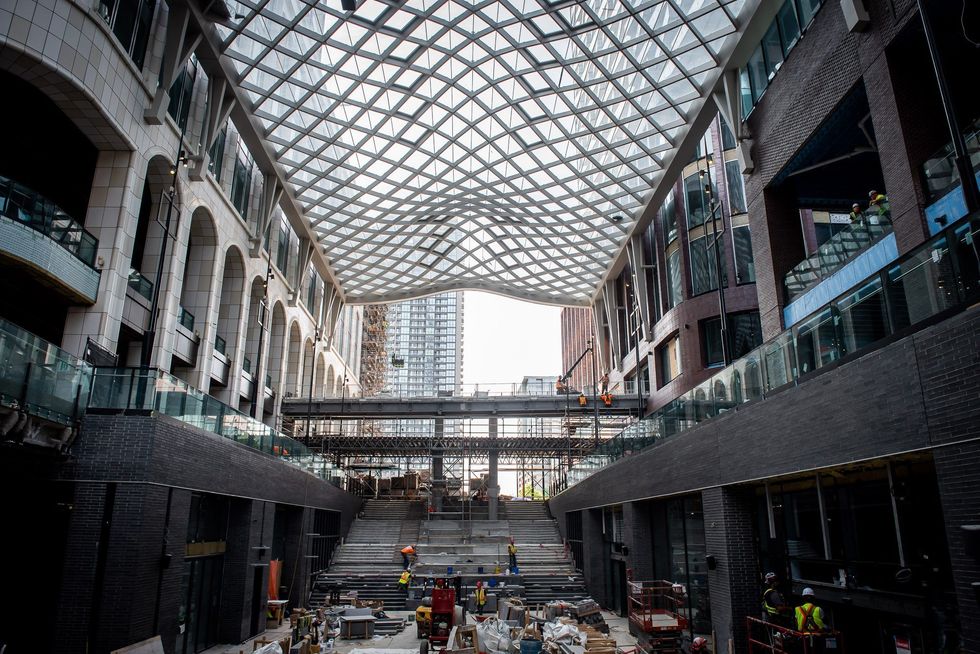
Despite the good intentions, if The Well is to become the diverse urban precinct that its builders -- RioCan and Allied – say they want, it must surely go beyond high end. Yet almost everything here is about exclusivity, extravagance, and expense. Judging from the proliferation of luxury condos, Class A office space and “bespoke” shopping centres across the city, Torontonians are accustomed to the spectacle of developers madly chasing the rich.
Alas, there isn’t enough wealth to go around. And even the most affluent need hardware stores, libraries, schools, convenience stores, and the like. The Well might well become a place to go on a shopping spree or spend a night out, but neighbourhoods must be more than an occasional destination. They must be places where people – families – live, and if lucky, work and play.
Let’s be frank, the success of the mall ultimately depends on what it has to offer. Once you’ve got all the 1,500-thread-count sheets you want and indulged fully in the self-care boutique, what’s left? The Well offers (yet another) Shoppers Drug Mart (Toronto already has well over 100) and, yes, even an Indigo, but where are the mom-and-pop shops and independent operators that give a neighbourhood character, interest, and liveability?
Perhaps these will come, but if they do it will only be in time. Given that construction of The Well isn’t quite finished, we shouldn’t hold our breath. The good news is that the physical ingredients of a neighbourhood are in place. The bad news is that they’re still searching for the recipe.
- Project Of The Year — The Well ›
- RioCan, Allied Announce Retail Tenants Coming To The Well ›
- 10 Years In The Making, ‘The Well’ Is (Almost) Ready For Its Close-Up ›
